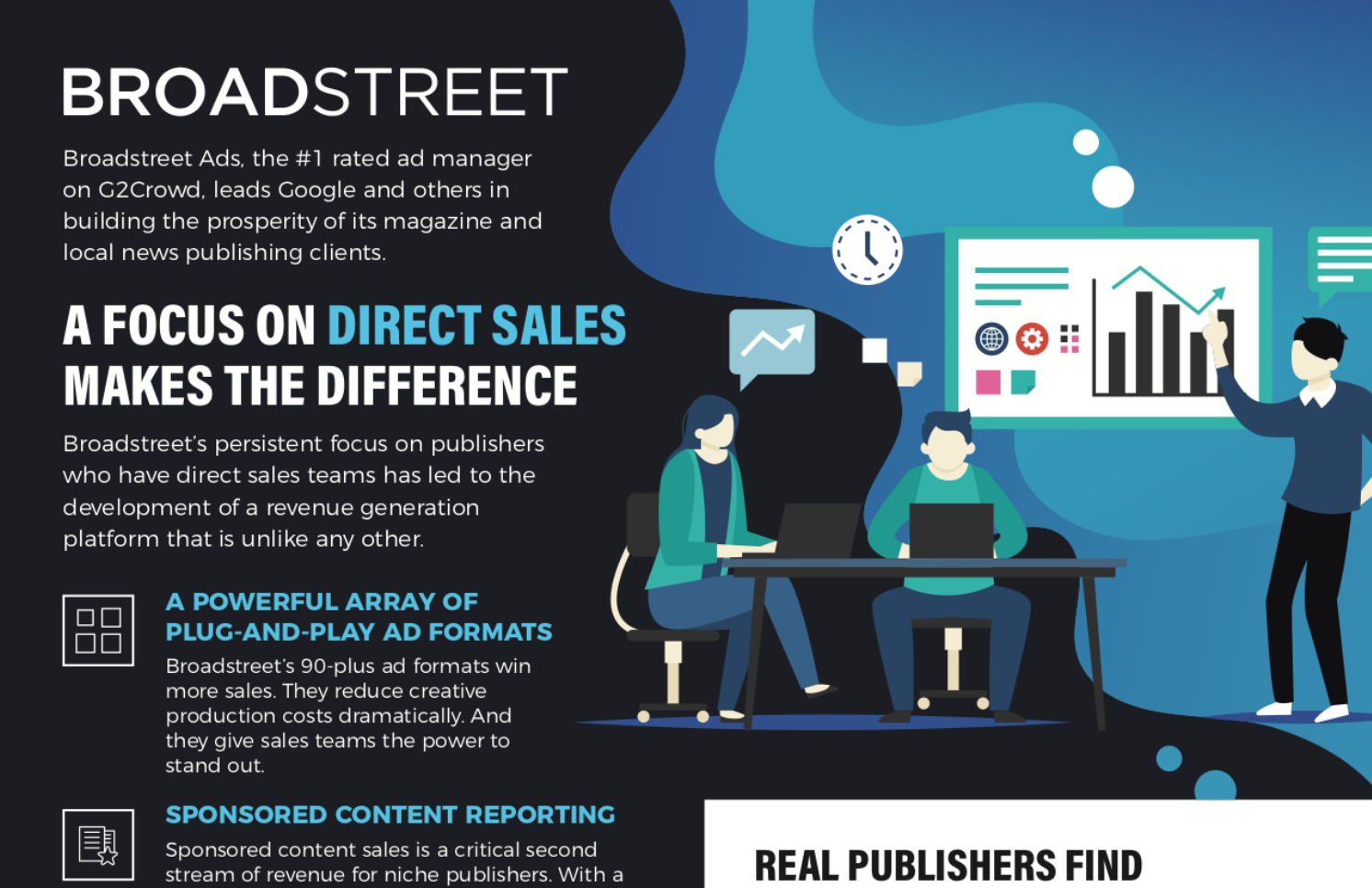Digital Ad Renewals: Be Transparent and Give Your Advertisers Detailed Reports
Industry watchdogs have been calling for more openness and accountability in online advertising for years, but recent revelations about the influence of foreign advertising dollars on Facebook have made the lack of standards even more concerning.
The lack of transparency around online advertising has led to a potential $120 billion in media spend now under review. Brands and agencies don’t feel like they’re getting the whole story from publishers without detailed reports, and tiptoeing around the issue is no longer a viable option. Brands, agencies, consumers, and even some publishers themselves all want answers.
Although technology giants like Facebook and Google offer up basic data on the number of views and clicks in their advertiser reports, local publishers can—and should—go much, much deeper. In Ten Advantages: How Magazine and Hyperlocal News Publishers Will Win In the Era of Facebook and Google, a new eBook published by Broadstreet, we discuss some of the biggest problems facing the local online advertising industry. Robot activity is becoming more ubiquitous, and yet this issue is actually helping some smaller publishers set themselves apart.
How’s that possible? It comes back again to openness and transparency. Successful magazine and hyperlocal news publishers are setting themselves apart from Facebook and Google by being as transparent as possible and providing clients with detailed reports on their advertising campaigns.
Local publishers should be providing advertiser clients with detailed reports on a weekly or monthly basis, showing the number of views and clicks for their campaigns. How many people saw an ad (potentially) and how many people clicked on it? That’s just the beginning of what advertisers want to know.
In order to run the most successful campaigns possible, brands and agencies need more than the basics. Who saw a digital ad, and in what context? Humanizing the data gives advertisers a clearer picture of the people behind the views and clicks listed in their detailed reports.
In a January 2018 survey of U.S. agencies and marketing professionals, 73% of respondents said getting insights and reporting deliverables is a challenge with programmatic advertising. A separate survey of senior marketing professionals, conducted by Winterberry Group and Interactive Advertising Bureau (IAB), found that measurement and attribution are likely to be among of the most important developments in digital advertising this year.
Offering more thorough, detailed reports is mission critical for small publishers looking to stand out and differentiate themselves in the competitive online advertising landscape.
Increased transparency is beneficial in other ways, as well. In an interview last December, Aron Schatz, a senior product manager at Viral Gains, a provider of video advertising technology, argued that transparency within the digital advertising industry will be a topic of trending importance in the coming year. He also said giving advertisers more visibility into the actual publications and placements of their ads would allow them to spend their advertising dollars wisely, with minimal fraud.
Transparency in digital advertising creates a greater level of trust between advertisers and publishers, and ultimately leads to a greater share of advertising budget being spent on the publisher’s platform. Transparency also leads to renewals, by establishing that the client’s money is being put to good use.
If you’re wondering why more publishers aren’t providing this type of detailed reporting, you’re not alone. Advertisers throughout the industry, from small businesses to multinational corporations, are asking for this data. But that level of accountability in detailed reports requires extra effort from the ad platforms. And although Google Analytics can be setup to track the performance of creative, doing so requires extra development.
Here at Broadstreet, we’re proud of the approach we’ve taken. We offer detailed location data for every click, along with detailed reports that show the number of views, hovers, clicks, and the click rate for each ad. There’s even a breakdown of ad events by city, so advertisers can better understand which consumers were clicking or hovering over their ads.
Extended event summaries are available to account for special or extended events, as well. For example, an extended event summary would list the number of front clicks, back clicks, right clicks, left clicks, etc. Detailed click data shows when each click occurred, along with the region, city, postal code, and ISP.
With Broadstreet, publishers have the opportunity to give their clients full access to these detailed reports on a regular basis, without exposing other advertisers’ data in the process. This leads directly to better overall ad performance, which is a topic we’ll dig into more in the next blog post in this series.


